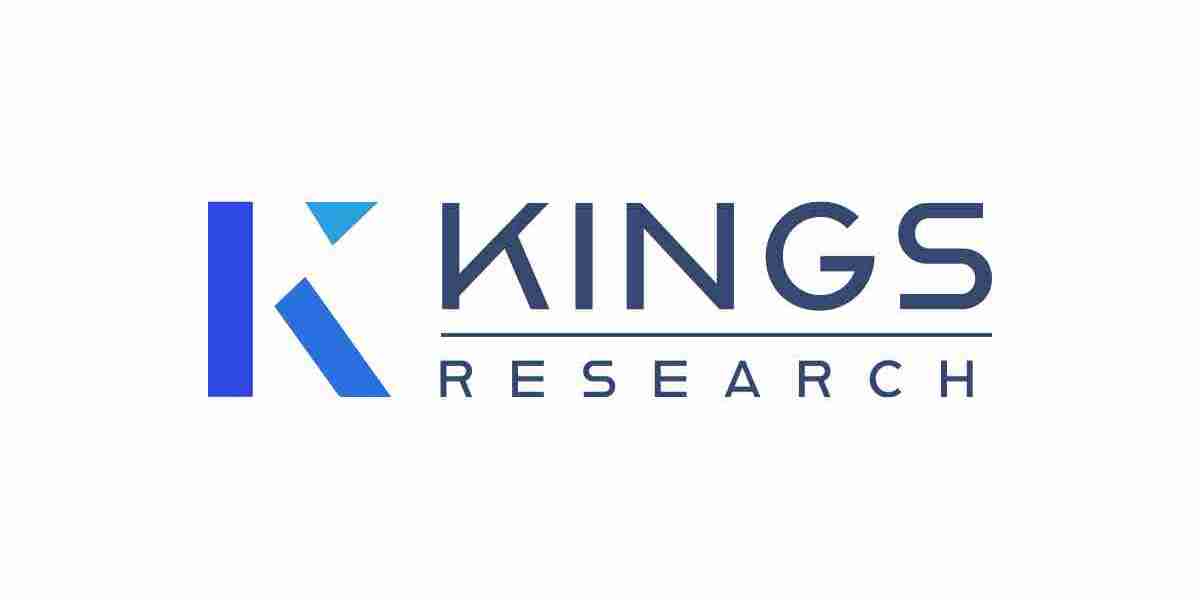The global sustainable aviation fuel (SAF) market is undergoing a transformational expansion, driven by decarbonization imperatives, innovation in feedstocks and conversion routes, and escalating regulatory mandates. According to the latest projections from Kings Research, the industry was valued at USD 698.4 million in 2023, and is estimated to reach USD 1,038.6 million in 2024, before surging to USD 17,181.4 million by 2031, at a compound annual growth rate (CAGR) of 49.31 % over the period from 2024 to 2031.
Market Overview
In 2023, the sustainable aviation fuel market stood at USD 698.4 million, reflecting an early stage but rapidly evolving sector. The forecast jump to more than USD 17 billion by 2031 underscores confidence in the scale-up potential of SAF technologies and the urgency of aviation sector decarbonization. This growth forecast suggests a near 25-fold expansion in just eight years, underscoring the steep growth trajectory expected within this niche.
The increasing adoption of SAF is motivated by the need to reduce lifecycle carbon emissions in aviation, often by 60–80 % relative to conventional jet fuel, depending on feedstock, conversion pathway, and blending level. As a “drop-in” solution (i.e., compatible with existing aircraft and fuel infrastructure), SAF offers a bridge toward cleaner aviation without wholesale redesigns of aircraft or engines.
Trends
Several interlocking trends are shaping the sustainable aviation fuel market:
Feedstock innovation and circular economy integration
The expansion of feedstock options—such as agricultural waste, used cooking oils, algae, municipal solid waste, forestry residues, and even captured CO₂ with hydrogen (in PtL or e-fuel routes)—is improving supply flexibility and sustainability credentials.Diversification of conversion pathways
While HEFA (hydroprocessed esters and fatty acids) has long been the dominant route, emerging technologies like Alcohol-to-Jet (ATJ), Fischer-Tropsch (FT), power-to-liquid (PtL) electro-fuels, and co-processing are gaining attention. The ability to scale novel pathways with low-carbon electricity and renewable hydrogen is critical for long-term viability.Blending mandates and certification frameworks
Governments and aviation regulators are implementing mandates or voluntary schemes requiring minimum blending of SAF into jet fuel. These create guaranteed demand and incentivize investment. Certification standards and lifecycle greenhouse gas (GHG) accounting (such as those by ASTM, CORSIA, or national regulators) are maturing.Investment flows, partnerships, and offtake agreements
Airlines, energy majors, and specialty fuels firms are entering strategic partnerships, joint ventures, and long-term off-take agreements to underwrite risk and accelerate deployment. These partnerships help derisk capital-intensive SAF production projects.Scaling capital infrastructure and refining capacity
Building plants, integrating with existing refinery infrastructure, and achieving economies of scale are critical trend items. As more capacity comes online, unit costs may decline, making SAF more commercially competitive with conventional jet fuel (especially under carbon-supportive policies).Global regionalization and competitive positioning
Regions with strong renewable energy, biomass potential, or carbon policy regimes (e.g., North America, Europe, parts of Asia) are vying to be SAF production hubs. Some regions may become net exporters of SAF.Technological improvement and cost reductions
R&D is focusing on yield improvements, catalysis, process intensification, feedstock logistics, and CO₂ to fuel processes (for synthetic fuels). Economies of learning are expected to drive down costs over time.
These trends combine to reinforce one another, moving the SAF industry from early commercialization toward more mature scaling.
Demand Dynamics
The demand for SAF is driven by multiple convergent pressures:
Decarbonization commitments by airlines and governments: Many airlines have set net-zero targets by mid-century, often pledging interim goals that rely on SAF uptake. Some governments have committed to or are mandating use of SAF in aviation. These commitments translate into rising demand.
Policy mandates, incentives, and carbon pricing: Policies such as SAF blending quotas, tax credits, subsidies, or carbon pricing/credits can improve SAF economics and guarantee demand.
Rising air travel volumes: Global aviation activity is expected to continue recovering and growing post-pandemic, increasing the total volume of jet fuel demand and hence total addressable demand for SAF-blended fuels.
Corporate and consumer sustainability pressure: Enterprises, corporations, and passengers increasingly value “greener” travel options, which encourages airlines to adopt SAF to reduce carbon intensity.
Market signals and offtake commitments: Airlines and investors often sign long-term contracts to secure supply, giving producers the visibility to invest in capacity.
However, there are constraints on demand growth: SAF currently represents a very small fraction of total jet fuel supply. For example, IATA reports that SAF production in 2025 is expected to reach about 2.1 million tonnes (approx. 0.7 % of global jet fuel production) and account for only 13 % of global SAF-eligible volume under current policies.
McKinsey modeling suggests that global mandated SAF demand could reach 4.5 million metric tons by 2030, with total global SAF target/demand possibly rising to 16 million metric tons or more once voluntary commitments are included.
Thus, while demand is strong on intent, a gap remains between ambition and physical production capacity—one that the industry must actively close.
Market Dynamics (Drivers, Restraints, Opportunities, Challenges)
Drivers
Environmental & regulatory pressure
Strong regulatory momentum—such as carbon border adjustment mechanisms, emissions trading systems, national climate goals, and aviation sector rules—encourages SAF adoption.Policy support and incentives
Government subsidies, tax credits, blending mandates, and grant funding help make SAF projects financially viable and mitigate investment risks.Strategic airline commitments and off-takes
Airlines acting as anchor buyers provide demand visibility and support capital investment in SAF production.Technological progress and learning curves
As conversion technologies mature and scale, costs are expected to drop, making SAF more competitive with conventional jet fuel.Feedstock availability & supply chains scale-up
Expanding sustainable feedstock pipelines (e.g. waste oils, agricultural residues) reduces bottlenecks and lowers raw material constraints.
Restraints and Challenges
High capital and operating costs
SAF production remains more expensive than traditional jet fuel on a per-gallon basis, especially for advanced pathways and synthetic fuels.Feedstock availability and competition
Sourcing sufficient sustainable biomass or feedstock is challenging, especially as multiple sectors compete for the same waste or biomass resources.Infrastructure integration
Integrating SAF production plants with existing refineries, pipelines, airports, and logistics networks can be complex and costly.Regulatory and certification complexity
Lifecycle GHG accounting rules, sustainability criteria, and fuel certification (e.g. ASTM) are intricate, and delays or regulatory divergence can slow adoption.Scale-up risks and capital intensity
SAF plants require high upfront investment and long payback periods, making financing and risk allocation challenging.
Opportunities
Frontier technologies (PtL, e-fuels, CO₂-to-jet)
These routes, although currently expensive, offer the potential for ultra-low emissions and carbon recycling, attracting investment and strategic interest.Regional SAF hubs and export opportunities
Some countries may become production centers and exporters of SAF, leveraging biomass, renewable electricity, or favorable policy regimes.Vertical integration and partnerships
Downstream integration with airlines or feedstock suppliers may help manage costs and ensure feedstock or demand stability.Carbon finance and credits monetization
SAF producers may gain additional revenue via carbon credits or emissions reductions markets, improving project economics.Innovations in feedstock sourcing
Algae, waste gas, and industrial CO₂ capture routes present novel sources of carbon for jet fuel production without competing with land use.
Risk Mitigation / Strategic Considerations
Producers and investors should seek to de-risk SAF projects via offtake agreements, government guarantees, blended finance mechanisms, and staged capacity expansions. Ensuring feedstock security, diversifying conversion technologies, and adopting modular or scalable designs can moderate technical and commercial risk. Engaging with regulators early and conforming to evolving certification and sustainability schemes is critical.
Future Outlook
The outlook for the sustainable aviation fuel market is decidedly bullish, albeit contingent on successful scale-up across multiple dimensions. Based on the Kings Research projection, growth from USD 1,038.6 million in 2024 to USD 17,181.4 million in 2031 implies a sustained CAGR of 49.31 %. If realized, this trajectory would see SAF transition from niche demonstration scale to meaningful penetration in the aviation fuel mix.
Over the coming decade:
Cost parity may begin approaching in select cases
As scale increases, outputs rise, and technologies mature, unit production costs of some SAF pathways may narrow the gap versus conventional jet fuel (especially where carbon pricing or incentives exist).Blending percentages may gradually rise
The 30–50 % blend segment (especially for regional or short-haul flights) is already highlighted in Kings data. Over time, higher blend levels (e.g., 50 %+, or drop-in replacement) may become more common in certain corridors.Global SAF capacity will scale steeply
Dozens of commercial-scale SAF plants are expected to come online worldwide, across feedstock and technology types.Geographic diversification and competition
Regions with biomass, renewable electricity, CO₂ sources, or policy support will compete vigorously to become SAF production centers.Regulatory mandates will strengthen
Governments and multilateral bodies may enforce more stringent blending quotas, carbon pricing or penalties, and fuel sustainability standards, providing demand stability for SAF.Integration of synthetic fuel (e-fuel / PtL) may accelerate
Particularly in regions with abundant renewable electricity and CO₂ capture, synthetic pathways may gain share, especially for long-haul flights where drop-in, zero-carbon fuels are especially valuable.Flight-level emissions reporting and carbon accounting
Airlines will increasingly include SAF usage in their emissions disclosure and marketing, further encouraging adoption.Innovation will continue
R&D in catalysts, process intensification, electrochemical pathways, and hybrid systems may yield breakthroughs that further reduce cost, inefficiency, or environmental footprint.
If these trends coalesce, by the early 2030s SAF could evolve from a boutique premium fuel to a mainstream carbon-mitigating tool in the aviation carbon transition.
Key Players
The sustainable aviation fuel market already features a dynamic roster of industry participants, spanning energy majors, specialty biofuel firms, technology providers, startups, and airlines. Some of the notable names frequently cited across market research include:
Neste Oyj (Finland)
Shell plc
TotalEnergies SE
BP plc
Eni S.p.A.
OMV Group
Preem AB
Sustainable Aviation (industry consortium)
Aemetis Inc.
REG Synthetic Fuels LLC
World Energy, LLC
SkyNRG BV
LanzaTech / LanzaJet
Velocys plc
Fulcrum BioEnergy Inc.
AltAir Fuels
WasteFuel
Red Rock Biofuels
These players engage through various parts of the SAF value chain: feedstock sourcing, conversion technology development, fuel production, certification, and distribution or offtake. Some airline groups also partner or invest directly in SAF projects.
For example, LanzaJet has drawn attention for its ethanol-to-jet (ETJ) production facility and partnerships spanning airlines and energy firms. Meanwhile, Neste continues to scale SAF capacity in its refining operations. These players often act as anchor customers, technology incumbents, or strategic partners in joint ventures.
Given the capital intensity of SAF, strategic alliances and vertical integration will likely continue to characterize this space.
Market Segmentation
According to Kings Research and industry norms, the sustainable aviation fuel market can be segmented in multiple ways. Below is a consolidated segmentation schema with associated insights:
By Fuel / Feedstock Type
Biofuel (conventional biomass-derived routes: waste oils, fats, algae, residues)
Hydrogen-based / hydrogen-derived fuels
Power-to-Liquid (PtL) / electro-fuels
Gas-to-Liquid (GtL)
In 2023, Kings notes that the biofuel segment accounted for about USD 9 million in revenue (a modest share), reflecting its nascent position. Other sources generally indicate biofuel (especially HEFA routes) currently dominates due to relative maturity, but PtL / synthetic routes are being incubated.
By Conversion Technology / Process
HEFA-SPK (hydroprocessed esters and fatty acids)
FT-SPK (Fischer-Tropsch)
ATJ (Alcohol-to-Jet)
Co-processing / SIP
Power-to-liquid / synthetic routes
Kings Research observed that the FT-SPK variant held 28.47 % share in 2023. Meanwhile, HEFA typically commands a strong share in many reports due to its earlier commercialization and regulatory acceptance.
By Blending Capacity / Share
Below 30 % blend
30 % to 50 % blend
Above 50 % blend or neat (100 %)
The 30–50 % blending band is expected to reach USD 6,415.2 million by 2031 in the Kings forecast. Over time, higher blends may become more acceptable, especially in shorter sectors or flexible aircraft.
By Platform / Application
Commercial Aviation
Military Aviation
Regional / Regional Transport Aircraft
Business & General Aviation / Private / Unmanned Aerial Vehicles (UAVs)
Kings highlights that the regional transport aircraft segment is projected to grow at a CAGR of 50.04 %. In many forecasts, commercial aviation is the dominant application, though military and defense sectors also may adopt SAF for emissions and strategic resilience.
These segmentation dimensions allow stakeholders to target opportunity areas, optimize technology choices, and tailor investment strategies.
Recent Developments
Here are some representative recent developments and signals in the SAF space (beyond our baseline forecast), drawn from broader market activity:
Malaysia’s first locally blended SAF delivery
Petronas delivered the first batch of domestically blended SAF to Malaysia Airlines at Kuala Lumpur International Airport, supplying flights on the London route. This move aligns with Malaysia’s roadmap to institute a 1% SAF blending mandate for international flights departing KLIA starting January 2027.Airline and OEM procurement
Boeing announced a purchase of 9.4 million gallons of blended SAF in 2024—its largest SAF purchase to date—marking a more than 60 % increase over the prior yearStrategic downstream investment
Wagner Corporation (Australia) plans to build a USD 1.7 billion SAF refinery in Brisbane by 2028, leveraging waste and agricultural feedstocks to supply regional aviationScaling ethanol-to-jet production
LanzaJet inaugurated a commercial-scale ethanol-to-jet facility, converting low-carbon agricultural waste and municipal solids into SAF and renewable diesel.Policy momentum in the EU
The European Parliament adopted a mandate requiring 2 % SAF blending in aviation by 2025, rising toward 70 % by 2050, under the broader "Fit for 55" and “net-zero by 2050” frameworks.
These examples reflect both industry commitment and the ramping of infrastructure, offtake, and policy alignment in key geographies.
Regional Analysis / Geographic Outlook
Regional market dynamics vary significantly across the globe, influenced by biomass endowment, renewable electricity resources, regulatory frameworks, and aviation demand. Below is a regional breakdown, incorporating the Kings Research baseline as well as contextual industry data.
North America (United States, Canada)
With a leading share of the SAF market (for example ~33.24 % in 2023 per Kings), North America remains a pivotal region. The U.S. in particular is supporting SAF via tax credits (e.g., in the Inflation Reduction Act), regulatory incentives, and major airline-offtake commitments. Many proposed SAF plants are located in the U.S. owing to capital markets, policy support, and existing aviation infrastructure. North America’s advanced energy sector and carbon markets also help undergird SAF economics.
Europe
Europe is a high-potential region, driven by ambitious climate goals, emissions regulation, and mandates such as the ReFuelEU Aviation regulation. The continent has both biomass resources (e.g. forestry residues, agriculture) and strong low-carbon policy frameworks. Several initiatives target scaling PtL, co-processing in refineries, and promotion of domestic SAF hubs. Europe is likely to remain a major market and technology testbed.
Asia Pacific
Asia Pacific offers dual opportunity and challenge. Rapid aviation growth (especially in India, China, Southeast Asia), combined with policy drive toward low-carbon infrastructure, makes it a prime growth region. According to Kings Research, Asia Pacific is expected to grow at a CAGR of 50.50 %. However, challenges include feedstock logistics, capital availability, regulatory maturity, and integration into global supply chains. Countries with biomass potential or emphasis on renewable power may emerge as SAF exporters.
Latin America
Latin America has abundant biomass and agricultural residues, positioning it as a potential SAF feedstock hub. Brazil, for instance, has strong experience in biofuels and could leverage that advantage into aviation fuels. Growing government interest and low-cost feedstocks could yield competitive projects.
Middle East & Africa
These regions are emerging SAF markets, with potential in leveraging renewable electricity (solar/hydrogen) for synthetic fuel routes, or integrating carbon capture and utilization. However, implementation is at early stages, constrained by regulatory uncertainties, capital availability, and nascent industry players.
Regional Risk and Opportunities Comparison
While North America and Europe benefit from strong policy and capital markets, they also face high feedstock competition and land constraints. Asia and Latin America have feedstock advantages but must build regulatory, capital, and technology ecosystems. Middle East & Africa may leapfrog via electro-fuel pathways leveraging renewable energy.
Conclusion & Call to Action
The sustainable aviation fuel market is at a critical inflection point. The Kings Research forecast outlines a bold trajectory—from USD 1,038.6 million in 2024 to USD 17,181.4 million by 2031, growing at 49.31 % CAGR—reflecting both ambition and the magnitude of opportunity. This growth signals that SAF is shifting from pioneering projects toward scalable commercial deployment.
To capture this opportunity:
Investors should prioritize projects with offtake agreements, diversified feedstocks, and flexible technology stacks.
Airlines should lock in SAF supply contracts early to secure critical capacity and demonstrate carbon leadership.
Governments and regulators must align policy incentives, certification frameworks, and blending mandates to reduce investment risk and demand uncertainty.
Technology providers and innovators should accelerate development of cost-reducing breakthroughs in catalysis, process intensification, and synthetic fuel pathways.
Browse To Related Article-




